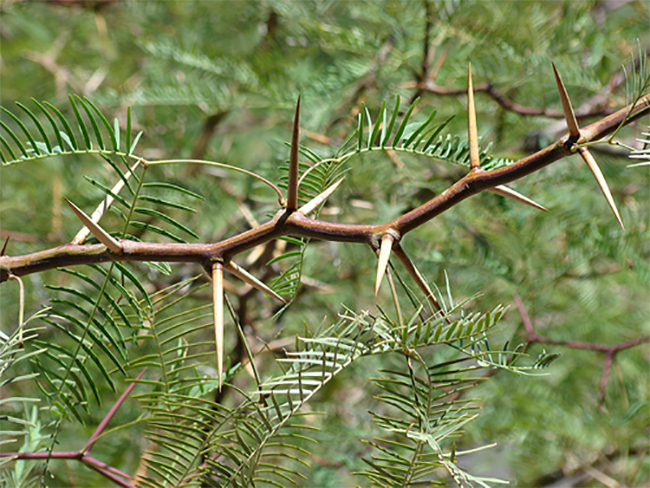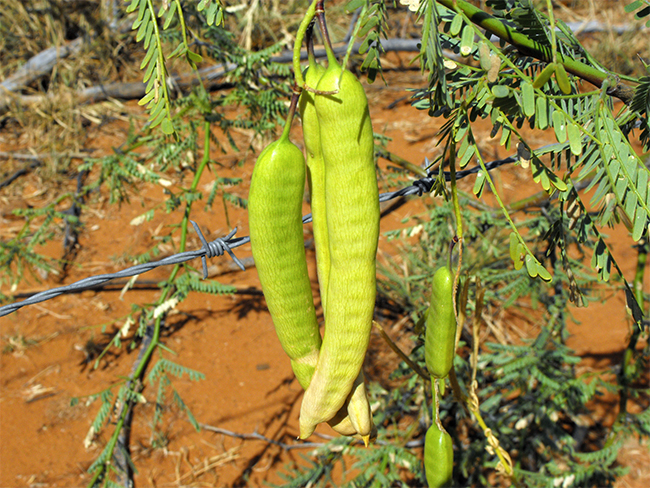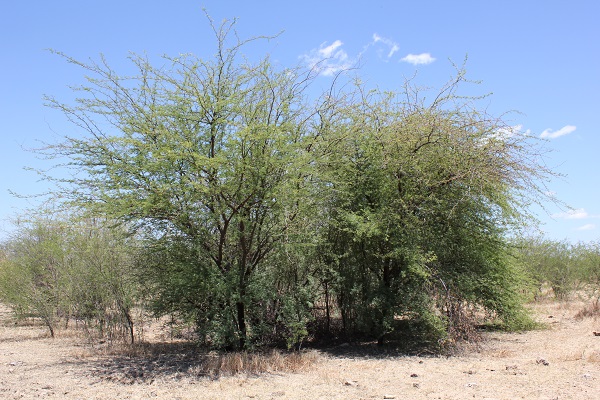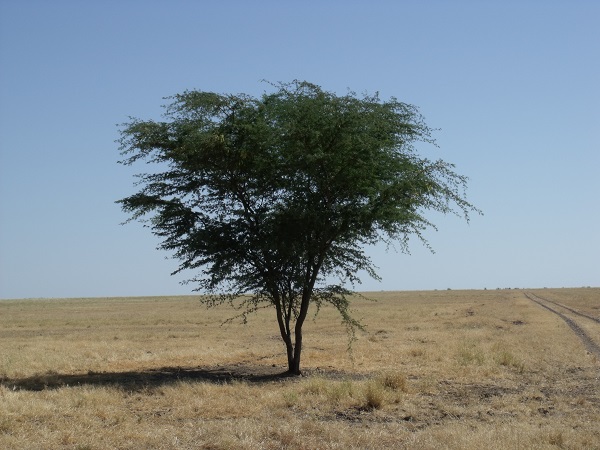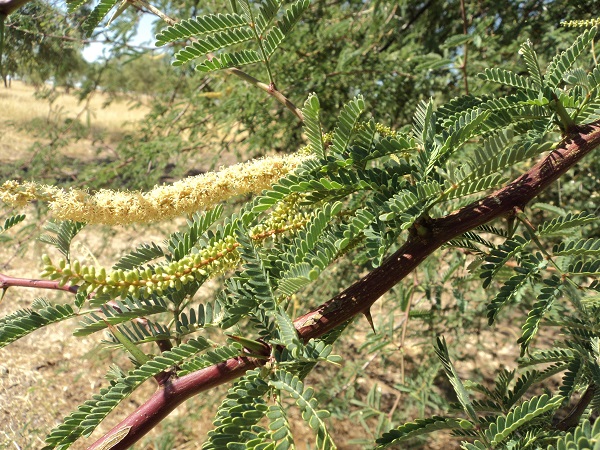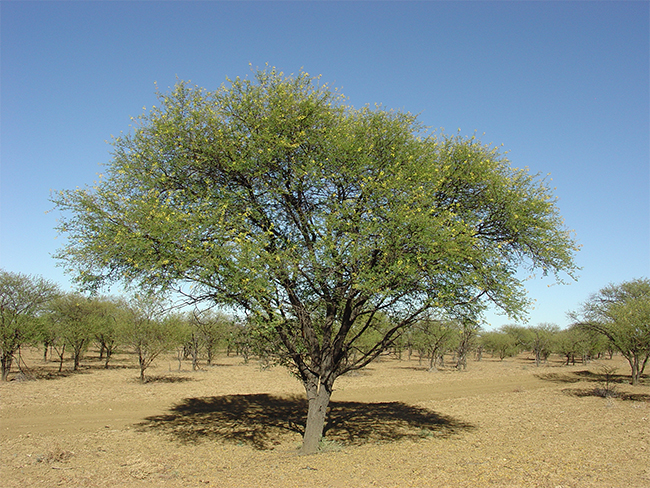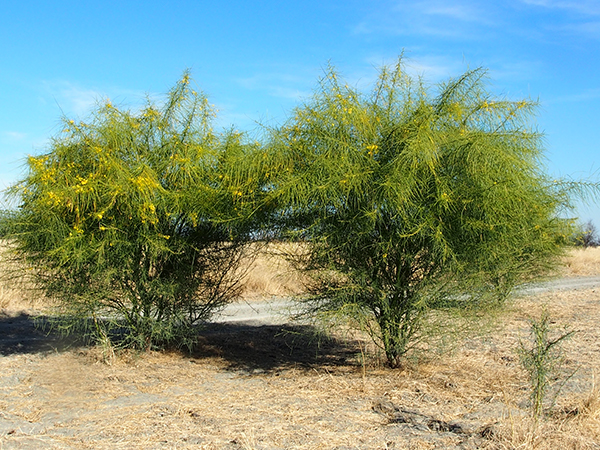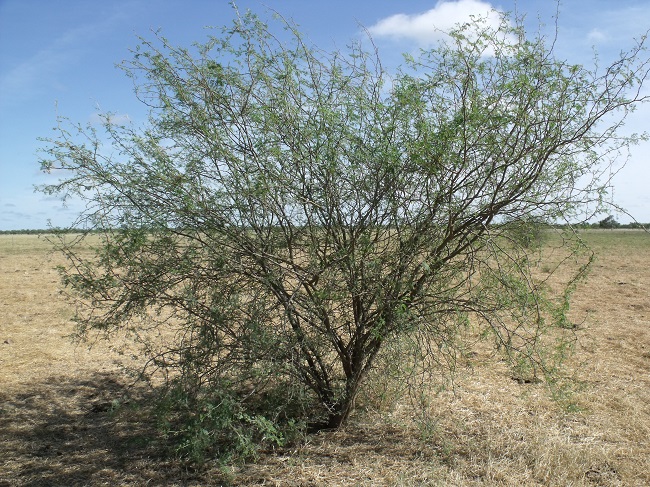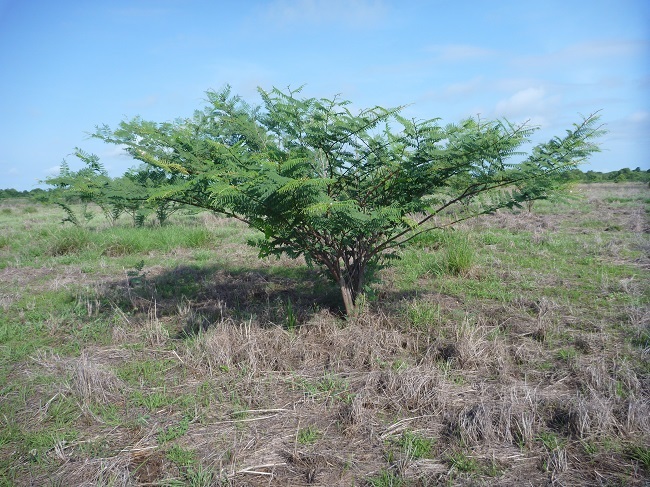Mesquite
Scientific name: Prosopis spp.
Declaration status: Class A
Mesquite is a Weed of National Significance. For more information, go to the Australian Government's Department of Environment website.
Mesquite has a statutory weed management plan that outlines the legal requirements for control.
Get the plan on the Territory Stories website. You can also get the discussion paper of how the plan was developed.
Native to North and South America, mesquite was introduced to Australia more than 100 years ago, where it was widely planted as a shade tree throughout western Queensland and north-western Western Australia.
It was also used as a soil stabiliser around mine sites in Queensland and New South Wales. Mesquite is now present in all mainland states.
In the Northern Territory (NT), mesquite occurs as scattered, isolated, low level infestations across multiple regions including Arnhem Land, the Victoria River District (VRD), the Barkly Tableland and the Alice Springs region.
On the Barkly Tableland low level infestations occur on at least 12 pastoral leases.
These infestations are current management priorities as further spread and establishment into clean areas is a significant risk. Scattered plants found in the VRD and Alice Springs region are managed as recorded/detected.
Impact
Pastoralism is the main land use in areas most susceptible to mesquite invasion.
Severe mesquite infestations can reduce the production of native and introduced pasture species by up to 90%.
Increased costs associated with mustering and weed control can have large impacts on industry profitability. Thorns can also damage vehicle tyres and injure animals and workers.
Mesquite can have all of the following impacts:
- forms dense, impenetrable thickets
- reduces biodiversity and ecological function
- invades and replaces native plant communities and habitat for wildlife
- reduces carrying capacity
- restricts mustering
- thorns are sharp and can cause injury and equipment damage.
Identification
You should use this as a guide - there may be other plants or weeds that look similar:
- single or multi-stemmed tree or shrubby bush with spreading canopy 3m to 15m tall
- zig-zag structure, single branches extend outside the main canopy
- contains thorns ranging from 0.4cm to over 7.5cm long
- leaves occur at each point where the branch changes direction
- one to four pairs of primary leaflets, each leaflet has seven to 21 pairs of small opposite secondary leaflets
- greenish yellow flowers, forming a cylindrical flower head 5cm to 8cm long
- pods straight or slightly curved 12cm to 20cm long.
To find out more, get the mesquite weed note on the Department of Lands, Planning and Environment website.
If you are unsure, contact the Weed Management Branch.
Similar looking plants
The following plant species look similar to mesquite:
Prickly acacia (Vachellia nilotica) is native to the tropics and subtropic of Africa, Pakistan, India and Myanmar.
It is a thorny, umbrella-shaped single stemmed tree.
Find out more about prickly acacia.
Parkinsonia (Parkinsonia aculeata) is native to central and South America, Mexico and southern USA.
It infests nearly one million hectares and threatens the agriculture and environmental values over three quarters of the Australian mainland.
Find out more about parkinsonia.
Mimosa bush (Acacia farnesiana) is native to Central and South America.
It is a rounded shrub or small tree that forms thorny thickets that hinder mustering and stock access to water. It is not a declared weed in the NT.
Mimosa (Mimosa pigra) is native to tropical America from Mexico to northern Argentina.
It is estimated that up to 140,000 hectares of land in the NT, 10% of the Territory's wetlands, is already impacted by mimosa.
Find out more about mimosa.
Read the what prickle bush is that? guide PDF (85.5 KB) to help you identify a prickle bush that might be mesquite.
Control
Mesquite in small, isolated groups is easy to control, but long-term monitoring and follow-up control programs must be done to stop re-establishment from seed banks that can stay viable for more than 10 years.
Chemical control
The best time to treat mesquite is from March to May. Below is a list of treatment methods that can be used.
| Chemical and concentration | Rate | Situation, method and notes |
|---|---|---|
|
Aminopyralid 8 g/L + Triclopyr 300 g/L + Picloram 100 g/L Grazon® Extra | 200mL / 100 L |
Seedling (individuals and infestation): Foliar spray - non-ionic wetting agent required - do not spray plants bearing pods |
|
Aminopyralid 8 g/L + Triclopyr 300 g/L + Picloram 100 g/Ls Various trade names | 350mL / 100 L |
Seedling (individuals and infestation): Foliar spray - non-ionic wetting agent required - do not spray plants bearing pods |
|
Triclopyr 240 g/L and Picloram 120 g/L Access® | 1 L / 60 L (diesel) 1 L / 60 L (diesel) |
Adult (individuals or infestation): Basal bark < 5cm stem diameter Cut stump > 5cm stem diameter |
Basal bark treatments are best administered during the active growing season.
This method involves spraying around the whole stem up to 300mm from the ground.
Cut stump treatments can be undertaken at any time of year, but are best administered during the active growing season.
This method involves applying herbicide to a newly cut stump immediately following chain sawing.
Non-chemical control
Hand pulling and grubbing
Weeds, including their roots, are physically pulled out of the ground by hand or using hand tools. This is an effective method of control for individual weeds and recent outbreaks that haven’t released seeds yet, but it requires a lot of labour.
Blade ploughing
A blade plough is used to push over some woody shrubs and sever their roots underground.
Bulldozing
Bulldozers, chopper rollers or graders are used to clear large weed infestations. This leaves large areas of soil exposed so follow up control or revegetation must be considered.
Spread
Cattle are a major cause of mesquite spread in the NT, but seeds are also readily spread by water flow (rain, floods), feral animals and vehicles.
Prevention
You can prevent the spread of mesquite by doing all of the following:
- map infestations to help develop a management plan
- control minor infestations, isolated outbreaks or seedlings first
- isolate and monitor newly transported stock, particularly those coming from Queensland, Western Australia or other properties with known mesquite infestations
- prevent grazing in areas where mature pods are available, potentially by fencing strategically to contain infestations
- isolate and monitor stock which are being moved from infested paddocks to clean paddocks
- eradicate all known mesquite plants and infestations
- implement early detection and eradication programs
- design and implement a spread prevention program
- designate wash down areas and actively work to prevent contamination of clean areas
- monitor areas that you have treated and watch for re-infestations.
Give feedback about this page.
Share this page:
URL copied!
